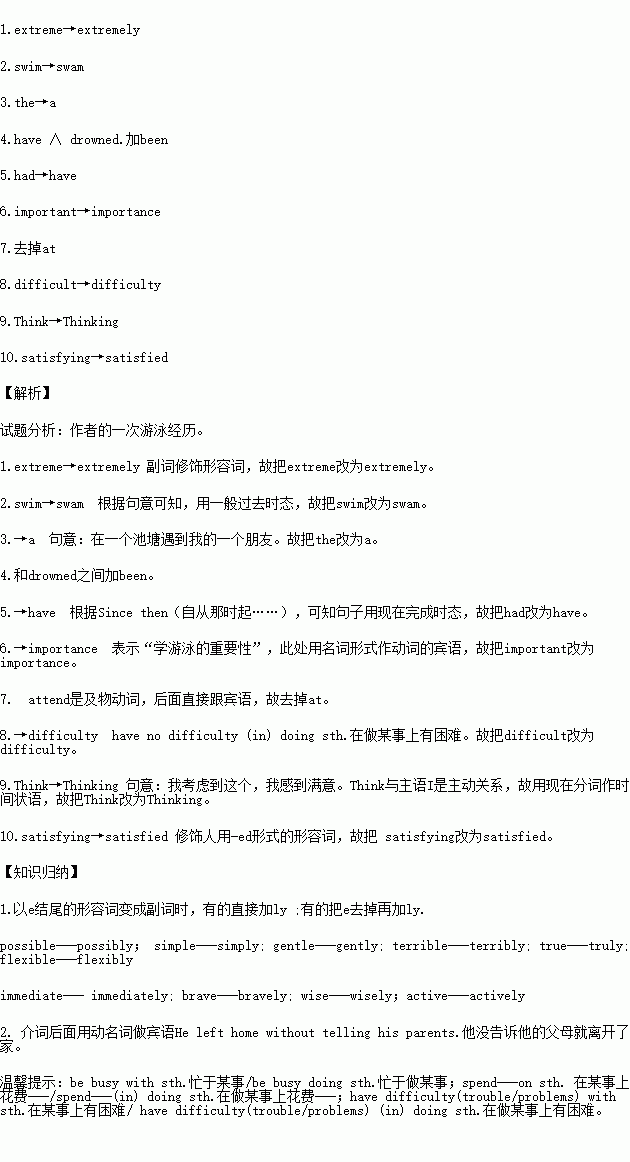ĚâÄżÄÚČÝ
¶ĚÎĸĴí
ĽŮ¶¨Ó˘ÓďżÎÉĎŔĎʦҪÇóͬ×ŔÖ®Ľä˝»»»Đ޸Ä×÷ÎÄŁ¬ÇëÄăĐ޸ÄÄăͬ×ŔĐ´µÄŇÔĎÂ×÷ÎġŁ×÷ÎÄÖĐą˛ÓĐ10´¦ÓďŃÔ´íÎóŁ¬ĂżľäÖĐ×î¶ŕÓĐÁ˝´¦ˇŁĂż´¦´íÎó˝öÉ漰һ¸öµĄ´ĘµÄÔöĽÓˇ˘Éľłý»ňĐ޸ġŁ
ÔöĽÓŁşÔÚȱ´Ę´¦ĽÓŇ»¸ö©×Ó·űşĹŁ¨ˇÄŁ©˛˘ÔÚĆäĎÂĂćĐ´łö¸ĂĽÓµÄ´ĘˇŁ
ÉľłýŁşÔÚ´íµÄ´ĘĎ»®Ň»şáĎߣ¬˛˘ÔڸôĘĎÂĂćĐ´łöĐ޸ĺóµÄ´ĘˇŁ
עŇ⣺1.Ăż´¦´íÎóĽ°ĆäĐ޸ľů˝öĎŢŇ»´ĘŁ»
2.Ö»ÔĘĐíĐ޸Ä10´¦Ł¬¶ŕŐߣ¨´ÓµÚ11´¦Ć𣩲»ĽĆ·ÖˇŁ
Boys and girls! IˇŻd like to share my swimming experience with you. My swimming experience is extreme interesting. There was a time when I swim like a rock. This went on till one day when I was fishing with a friend of mine at the pond. I slipped into it. Had my friend not come to my rescue, I would have drowned. Since then, I had come to know the important of learning to swim. I didnˇŻt attend at any training class but learned it all by myself. Strange to say, I have no difficult swimming at all now. Though the way I swim looks awkward (±ż×ľµÄ), at least it can keep me floating. Think of this, I feel quite satisfying.
Yours,
Zhang Ming

